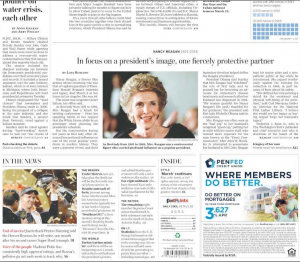The internet is buzzing as Americans wait to see who will win the NY primary. Polls are showing Hillary Clinton and Donald Trump as the frontrunners while fans of Bernie Sanders are still hopeful. A steal is unlikely, but possible, depending on who you’re receiving your news from. Every major news outlet is tuned in to the primary with reporters and journalists updating the American people with a play-by-play.
Imagine this election before the time of Zuckerberg. Would Trumps antics been as talked about? Or how about Sarah Palin’s support speech on his behalf. Would the bird who interrupted Bernie Sander’s speech have gone viral?
Would the details of this election have been ignored or redacted? The details, the drama that we all hate to admit, we care about.
Networks aim to appeal to millennials. How do they do this? By meeting them, we’re they are at, Online. They’re live streaming on site, posting to Facebook, and driving traffic to their pages by interlocking all of their social media platforms. At one time, this may have been considered a ‘smart move’ but now, it’s the norm for how people digest their news. No longer do people solely turn to the New York Times, but instead, rely on their newsfeed to update them.
Facebook has changed political reporting. I would argue, for the better. It’s made politics more accessible and digestible for the average American — one who might not be up-to-date on all of the issues. With Facebook, the average person can interact with politics in a fresh way. They can view a Bernie Sanders add, watch a Hillary Clinton interview, and subsequently post a meme all while tracking the polls.
All of this, is done, on a single platform — facebook.
Facebook, has changed political reporting. No longer can political reporters stay in this high brow bubble. They’ve had to adapt. Adaptation, has lead to a new type of coverage. I’ve used the word a lot, and I’m going to use it again — accessible.
This is what makes social media so golden. Political reporting is no longer for political savvy but the masses.
-J.




 above the fold
above the fold


 d to report.
d to report.

